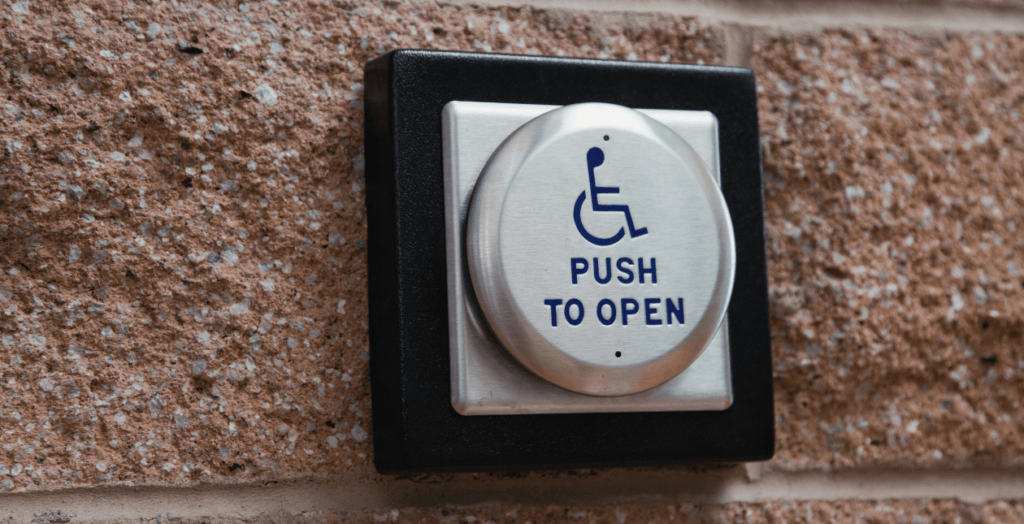In the diverse mosaic that is our user base, accessibility in product design isn’t just a feature—it’s a fundamental component of a respectful, inclusive, and user-centric approach to creating products. When we talk about designing for accessibility, we’re underscoring the vital importance of ensuring that products are usable by people who have a wide range of abilities, including those with disabilities. This isn’t a niche area or an optional add-on; designing for accessibility is essential to reach and resonate with a broader audience, making it integral to successful product design.
The principle of accessibility goes beyond the altruistic goal of inclusion. From a business standpoint, it can significantly expand market reach, enhance brand image, and help avoid legal challenges while serving your product to people who might otherwise be excluded.
Through this thoughtful exploration into product designing for accessibility, let’s delve into what it means to create inclusive designs—the why, the how, and the profound impact it can have on our collective experience of the world through the products we use.
Principles of Accessible Design
Designing with accessibility in mind means tapping into a rich vein of empathetic innovation, aiming to create products that cater to everyone, including people with disabilities such as visual, hearing, motor, or cognitive impairments. Accessible design isn’t just about compliance with standards or rules—it’s about understanding human diversity and building products that reflect and celebrate that diversity.
Accessible design isn’t about ‘dumbing down’ your product. It’s quite the opposite—it involves designing your product so savvy, so intuitively, that it becomes usable for everyone. It’s about recognizing that every individual interacts with products in unique ways due to personal preferences, circumstances, or the context in which they are using your product.

Why Accessibility Matters
Expanding Your User Base
One of the most compelling reasons for designing accessible products is the sheer expansion of your potential user base. By not considering accessibility, you may be inadvertently alienating a significant portion of the population that could benefit from your product. Designing with accessibility in mind broadens your market and embraces users from all walks of life.
Enhancing Usability for All
When products are designed to be accessible, they undergo rigorous considerations for clarity, simplicity, and ease of use. These considerations inherently elevate the user experience for all users, not just those with disabilities. Features that are intended to make a product more accessible, such as clear labels, logical navigation, or readable fonts, often end up making the product more appealing and easier to use for everyone.
Legal and Ethical Considerations
Many jurisdictions are adopting regulations that require digital accessibility, and failing to comply can result in legal consequences. However, beyond regulatory compliance, there’s an ethical argument for accessibility. It speaks to a company’s values—providing equitable use of their products is the right thing to do and demonstrates a commitment to corporate social responsibility.

How to Design for Everyone
Implement Accessibility From the beginning
Accessibility should not be an afterthought—it should be a key consideration from the beginning of the product development process. The later in the process you think about accessibility, the costlier it will be to implement.
Understand the User’s Needs
Designing for accessibility begins with empathy. You must step into the shoes of users with disabilities and understand the challenges they face in interacting with products. To gain these insights, include people with disabilities in your user research and testing phases.
Educate and Train Team Members
Everyone involved in the product development process should have a basic understanding of accessibility. This includes designers, developers, testers, and content creators. By educating and training team members, accessibility becomes an integral part of the design process rather than an afterthought.
Follow Established Guidelines
When designing for accessibility, there are established guidelines that provide a wealth of information on best practices. These guidelines are created by organizations such as the International Organization for Standardization (ISO). By following these guidelines, designers can ensure that their products are accessible to a wider range of users.
Use Clear and Consistent Design
Good design principles are inherently inclusive. Use clear, meaningful labels for interactive elements, consistent design patterns, and predictable behaviors to make your product more intuitive and easier to navigate.
Test with Real Users
Accessible design needs validation, and there’s no better way to ensure effectiveness than by testing with real users who have a range of abilities. This direct feedback can reveal nuances and insights that lead to profound improvements in your product’s design.

Tips for Designing Accessible Products
Let’s break down some actionable steps you can take to infuse accessibility into your product design.
Diverse Team Inclusion
Build teams with a variety of backgrounds and abilities. Diverse teams bring diverse perspectives, which is invaluable in creating products that cater to a wider audience.
Color and Contrast
Visual accessibility hinges on using adequate color contrast between text and background to ensure readability. Avoid using color as the only means of conveying information.
User Control for Media
When media plays a role in your product, offer user control. Allow users to play, pause, stop, or adjust the volume of audio and video content.
Content Clarity
Clarity goes a long way—simple language, well-structured content, and a clear hierarchy make your product easier to understand and use.
Regular Auditing and Updating
Accessibility is not a ‘set it and forget it’ deal. Regularly audit your product for accessibility and stay abreast of new guidelines and technologies.
Inclusive Marketing
Ensure your marketing strategies and materials are as accessible as your product. This demonstrates a commitment to inclusion at every level.
Incorporating accessibility into product design not only adheres to ethical standards but also makes good business sense. It’s about considering the full spectrum of human diversity and striving to create an inclusive world one product at a time.
Designers have an incredible power to shape experiences. By weaving accessibility into the fabric of product design, we can transform this power into a beacon of change, shining a light on inclusive practices that empower all users and champion the cause of equal access. Remember, designing for accessibility isn’t just about certain individuals—it benefits us all, creating a more navigable, practical, and empathetic world.




